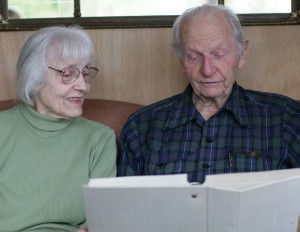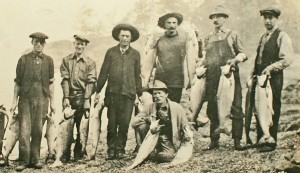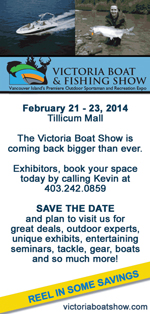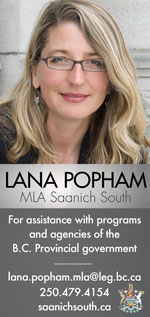Where Have All The Fishes Gone?
By Ed Johnson, Citizen Journalist
Eighty-eight year old Jack Lenfesty and his wife, Juanita have resided on the shores of the Saanich Inlet in the same home for over 60 years. Before that, their home belonged to Jack’s father, W.N. Lenfesty, who operated one of Victoria’s first sporting goods stores and used the house as a Summer cottage. During that time, the Lenfestys have witnessed the gradual environmental degradation of the inlet; and in particular, the loss of a fishing resource that they once enjoyed.
Jack fondly remembers when his father “… could go a short distance from the shore any  evening and catch dinner after just a few casts. Spring and Coho salmon were plentiful, but from the mid 70′s this gradually disappeared until today when one is lucky even to bring up a few trapped prawns.”
evening and catch dinner after just a few casts. Spring and Coho salmon were plentiful, but from the mid 70′s this gradually disappeared until today when one is lucky even to bring up a few trapped prawns.”
At first glance, the cause appears to be overfishing by an ever increasing human population. However, a baseline study initiated by the Government of British Columbia in 1994 suggests many more possibilities. Poor water circulation, fecal coliform contamination, metal and DDT contamination in sediments, climate change and fisheries management practices; even El Niño were mentioned. 
Perhaps the biggest loss has been to the local First Nations communities, who had always relied on the abundance of fish and related seafood that the inlet provided. The report at that time noted that 12 of the 15 shellfish beaches on the Saanich Peninsula were closed due to fecal contamination – possibly from manure piles or failing septic fields.
Some local not-for-profit volunteer groups, such as SeaChange have decided to take matters into their own hands in an attempt to revive salmon populations by focusing on conservation and protection of eelgrass. This endangered habitat contributes to the spawning ground for salmon, herring, crabs, clams and other marine life.
Through education and advocacy with local communities (both Aboriginal and non-Aboriginal), the volunteers at Sea Change hope to rehabilitate marine environments on the Saanich Peninsula. Sarah Verstegen, Operations Manager, is once again staffing the popular Tod Inlet Nature Float. “We hope to have the float operational in mid-June. On display will be aspects of the cultural and natural history of Tod Inlet. It can be reached by foot from Benvenuto Road, or by parking on Wallace Drive and walking the Tod Inlet Trail down to the water’s edge.”
While SeaChange is hoping its efforts will see the varieties of fish returning to the Inlet, another effort was being trialed in Haida Gwai. In October 2012, Canadian news media carried stories about the addition of 100 tons of iron oxide by an organization known as Haida Salmon Restoration Corp into the Gulf of Alaska, based on the theory that adding iron will cause a plankton bloom – providing more food for salmon; thereby increasing stocks.
Which begs the question, could adding iron to the Saanich Inlet help increase salmon stocks by increasing plankton and food for salmon?
However, renowned ocean scientist and Order of Canada recipient Dr. Tim Parsons, who lives on the shore of the Inlet in Brentwood Bay throws cold water on that idea. He says, “Regardless of the merits or lack thereof of the Haida Gwaii experiment, you cannot take what was done on the coast and discuss Saanich Inlet in the same context. Saanich Inlet is not iron limited. All coastal regions have lots of iron because of the proximity of the coast. It is the ocean waters off the continental shelf of the Gulf of Alaska, that are iron limited and so the iron was dumped two hundred miles off the coast and did not mix with waters on the shelf.”
In the meantime, Jack and Juanita have only memories and photographs of the once pristine Saanich Inlet, which they first called home in the early 1940′s. Copies of Jack’s old photographs (shown here) are of Jack’s father, W.N. Lenfesty, and friends who regularly fished the inlet with little Jack in tow, sometimes even catching salmon from shore.



















